Koblenz: Rivers, History, and Charm
Join us for a captivating exploration of Koblenz's rich heritage and stunning sights. This free walking tour unveils the city's hidden gems and iconic landmarks.
Time
5 Hours
Stops
9 Places
Distance
2.6 km
Deutsches Eck (German Corner)
Begin your tour at the famous Deutsches Eck, where the Rhine and Moselle rivers meet, and admire the grand statue of Emperor Wilhelm I.
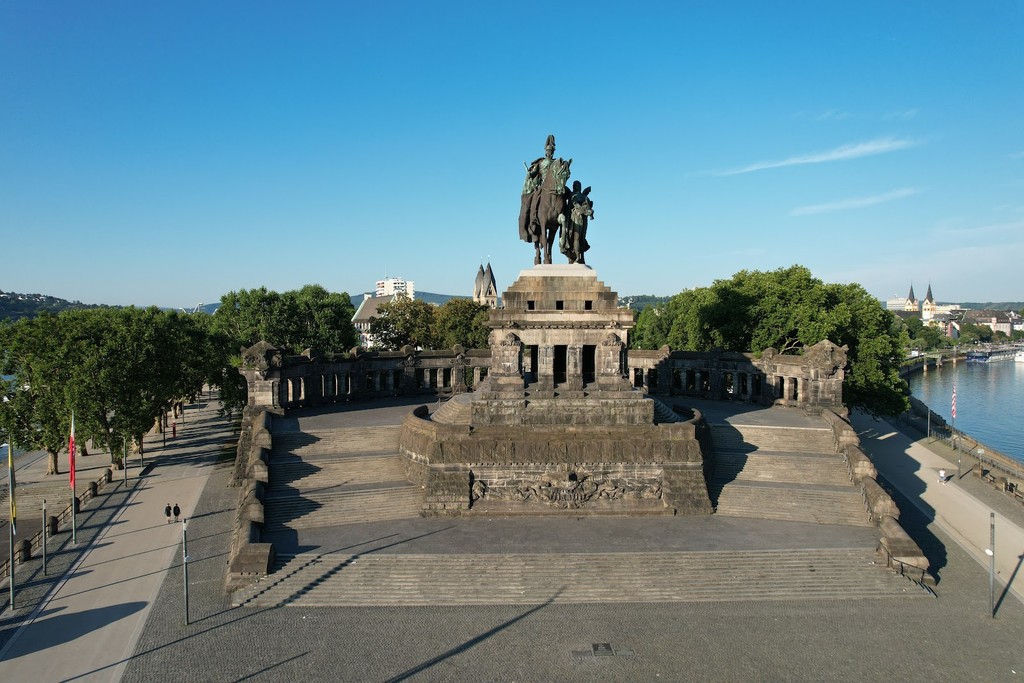
Deutsches Eck (German Corner) (Source: Google Maps)
Deutsches Eck, or German Corner, is a prominent headland located at the confluence of the Rhine and Moselle rivers in Koblenz. This historically significant site is marked by a grand equestrian statue of Emperor Wilhelm I, erected in 1897 to commemorate the unification of Germany. The area has been a meeting point for travelers since the Roman era, and it symbolizes the unity of the German states. The statue itself stands 14 meters high and is a popular photo spot for tourists. Surrounding this landmark is a beautiful park area, offering stunning views of the rivers and the surrounding hills. The site is not only a visual delight but also a place steeped in history, reflecting the evolution of Germany from its early days to a unified nation. Visitors can enjoy leisurely walks along the riverbanks, making it an ideal starting point for exploring the rich cultural heritage of Koblenz.
Basilica of St. Castor
Just a short walk away, visit the Basilica of St. Castor, the oldest church in Koblenz, showcasing impressive Romanesque architecture.
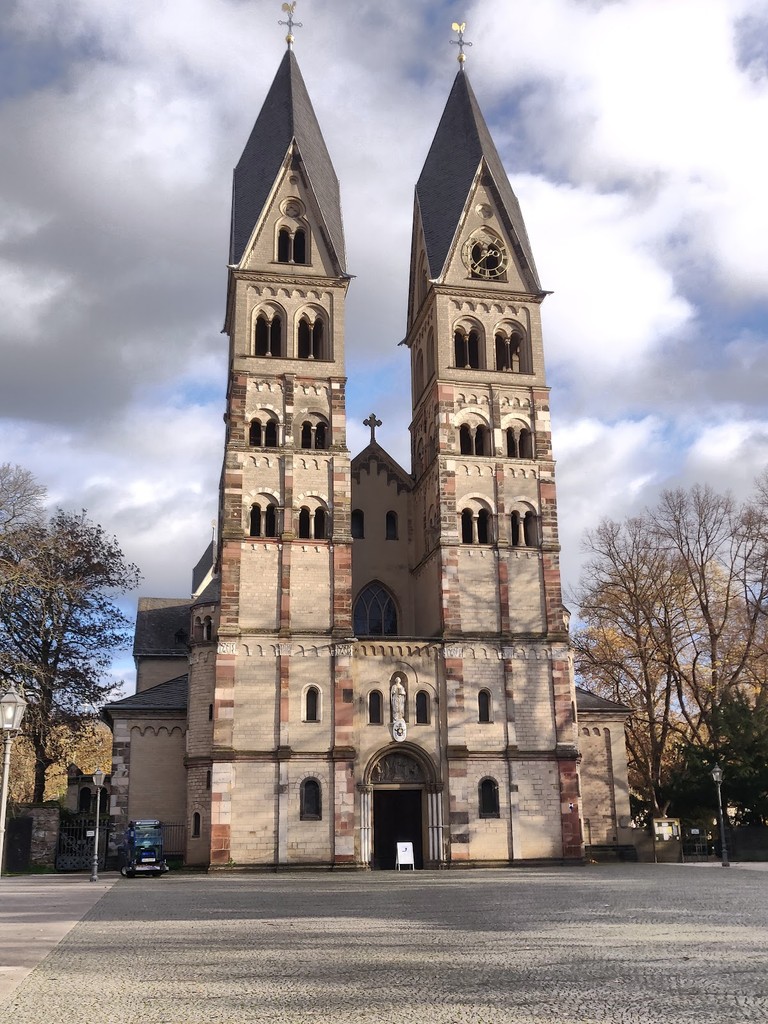
Basilica of St. Castor (Source: Google Maps)
The Basilica of St. Castor is the oldest church in Koblenz, with origins dating back to the 9th century. This remarkable structure exemplifies Romanesque architecture, characterized by its sturdy stone walls, rounded arches, and intricate decorations. The basilica has undergone several renovations over the centuries, with significant restorations in the 19th century that preserved its historical integrity. Inside, visitors can admire the beautiful altar, stunning stained-glass windows, and a rich collection of religious artifacts. The basilica is dedicated to St. Castor, the patron saint of Koblenz, and it has been a vital center for Christian worship and community life for over a millennium. Its historical significance is further emphasized by its status as a UNESCO World Heritage site. The surrounding area is tranquil, making it a perfect spot for reflection and appreciation of the architectural beauty that has stood the test of time.
Florinsmarkt
Continue to Florinsmarkt, a picturesque market square surrounded by historic buildings, including the Florinskirche.
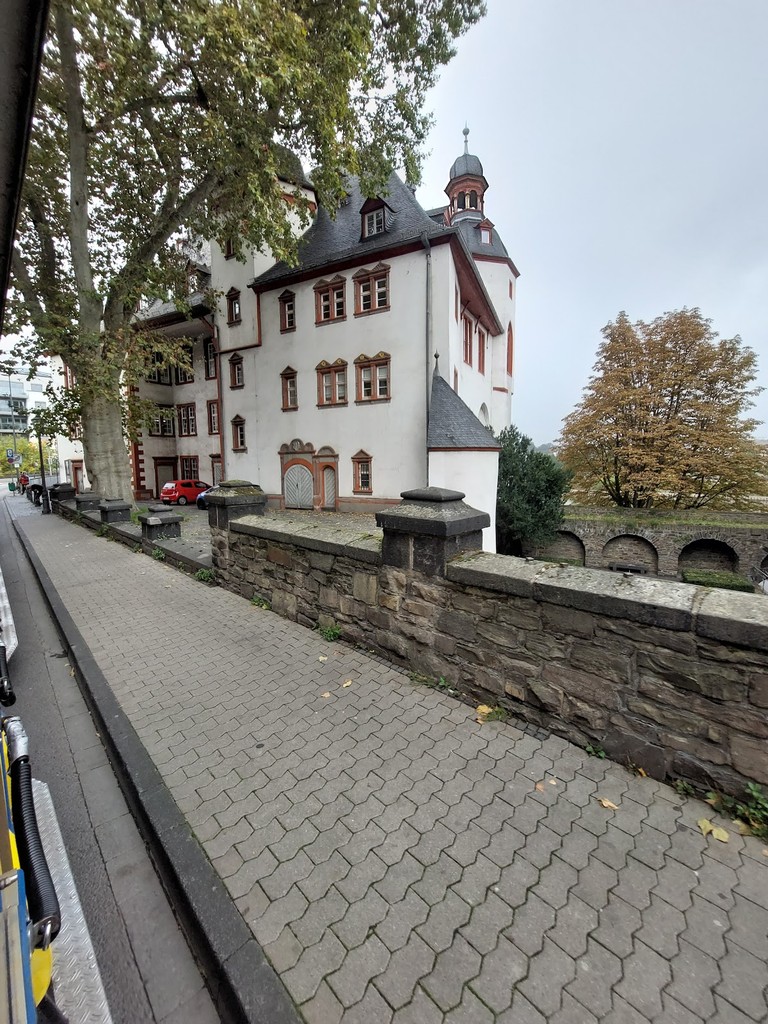
Florinsmarkt (Source: Google Maps)
Florinsmarkt is a picturesque market square in Koblenz, surrounded by a variety of historic buildings that reflect the city's medieval past. This charming square takes its name from the nearby Florinskirche, a beautiful Gothic church that dates back to the 13th century. The market square has been a hub of activity for centuries, serving as a gathering place for locals and visitors alike. Today, it is lined with cafes, shops, and stalls, offering a vibrant atmosphere where one can enjoy local delicacies and crafts. The architecture around the square showcases a mix of styles, from Gothic to Renaissance, providing a visual feast for architecture enthusiasts. Throughout the year, Florinsmarkt hosts various events and markets, enhancing its role as a cultural focal point in Koblenz. The square is an ideal spot to relax, people-watch, and immerse oneself in the lively ambiance of the city.
Koblenz Old Town (Altstadt)
Wander through the charming streets of Koblenz's Old Town, filled with half-timbered houses, quaint squares, and historical buildings.
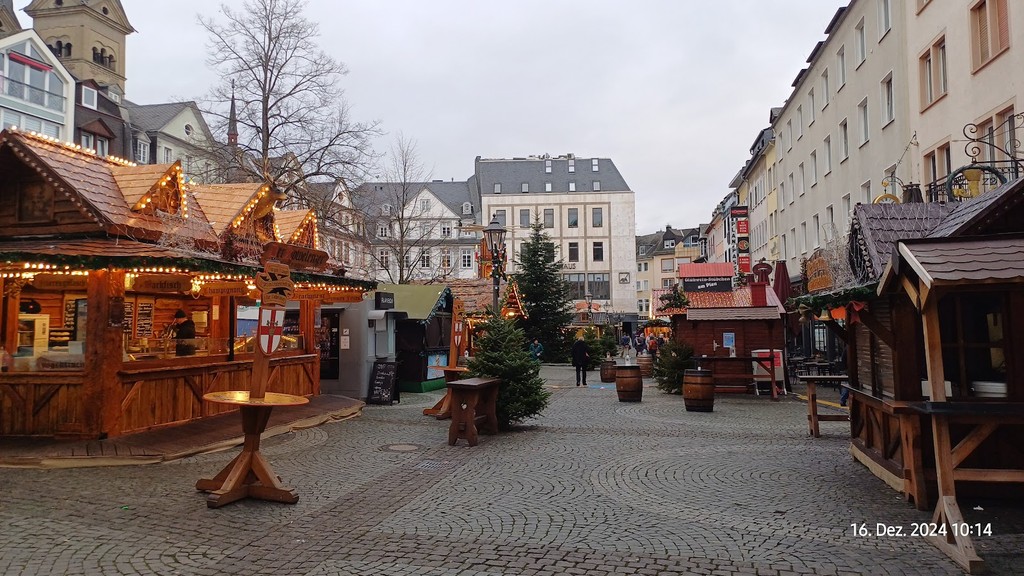
Koblenz Old Town (Altstadt) (Source: Google Maps)
Koblenz's Old Town, or Altstadt, is a charming area that showcases the city's rich history through its labyrinth of narrow streets and beautifully preserved half-timbered houses. This historic district is a delightful blend of medieval architecture and modern life, where visitors can explore quaint squares, boutique shops, and cozy cafes. Significant landmarks dot the area, each telling a story of Koblenz's past. The Old Town is known for its vibrant atmosphere, especially during festivals and markets, where locals gather to celebrate their heritage. Walking through the cobbled streets, one can feel the echoes of history, from the Roman Empire to the present day. The Old Town is not only a feast for the eyes but also a window into the daily lives of Koblenz's residents, making it a must-visit destination for anyone wanting to experience the city's unique character.
Liebfrauenkirche (Church of Our Lady)
Visit the Liebfrauenkirche, a stunning Gothic church with a rich history dating back to the 5th century.
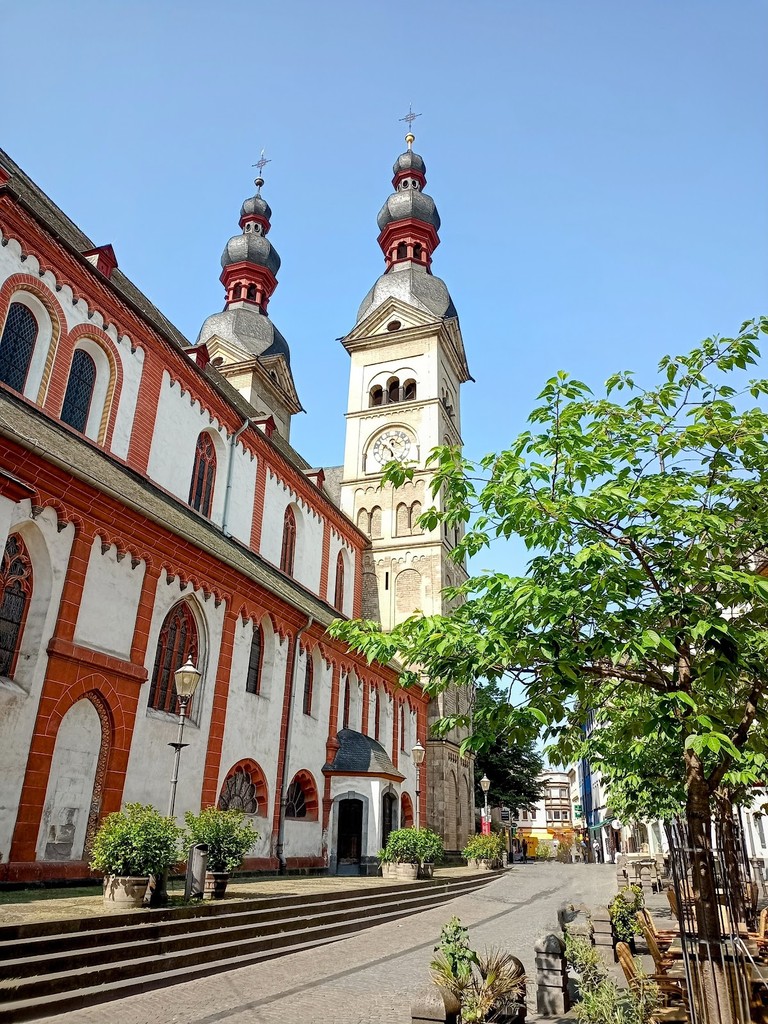
Liebfrauenkirche (Church of Our Lady) (Source: Google Maps)
Liebfrauenkirche, or the Church of Our Lady, is a stunning Gothic church located in the heart of Koblenz. Its construction began in the 5th century, making it one of the oldest churches in the region. The church is renowned for its striking architecture, featuring intricate stonework, tall spires, and beautiful stained-glass windows that illuminate the interior with colorful light. Over the centuries, Liebfrauenkirche has served as a pivotal place of worship and community gathering. The church's historical significance is underscored by its resilience through wars and changes in governance, standing as a testament to the faith and dedication of its congregants. Inside, visitors can find a collection of sacred art, including sculptures and altars, that reflect the church's long-standing traditions. The serene atmosphere and architectural beauty make Liebfrauenkirche a peaceful retreat for reflection and admiration.
Altes Brauhaus Koblenz
Take a break and enjoy a traditional German meal and local beer at Altes Brauhaus, a cozy establishment in the heart of the Old Town.
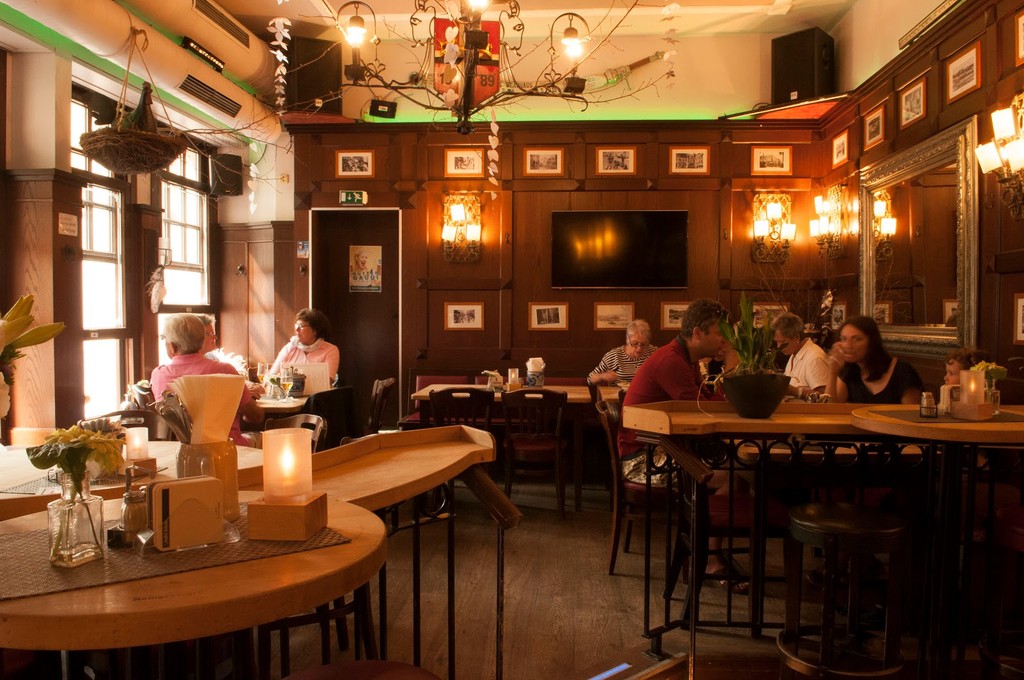
Altes Brauhaus Koblenz (Source: Google Maps)
Jesuitenplatz
After your meal, make your way to Jesuitenplatz, a beautiful square named after the former Jesuit College, now the City Hall.
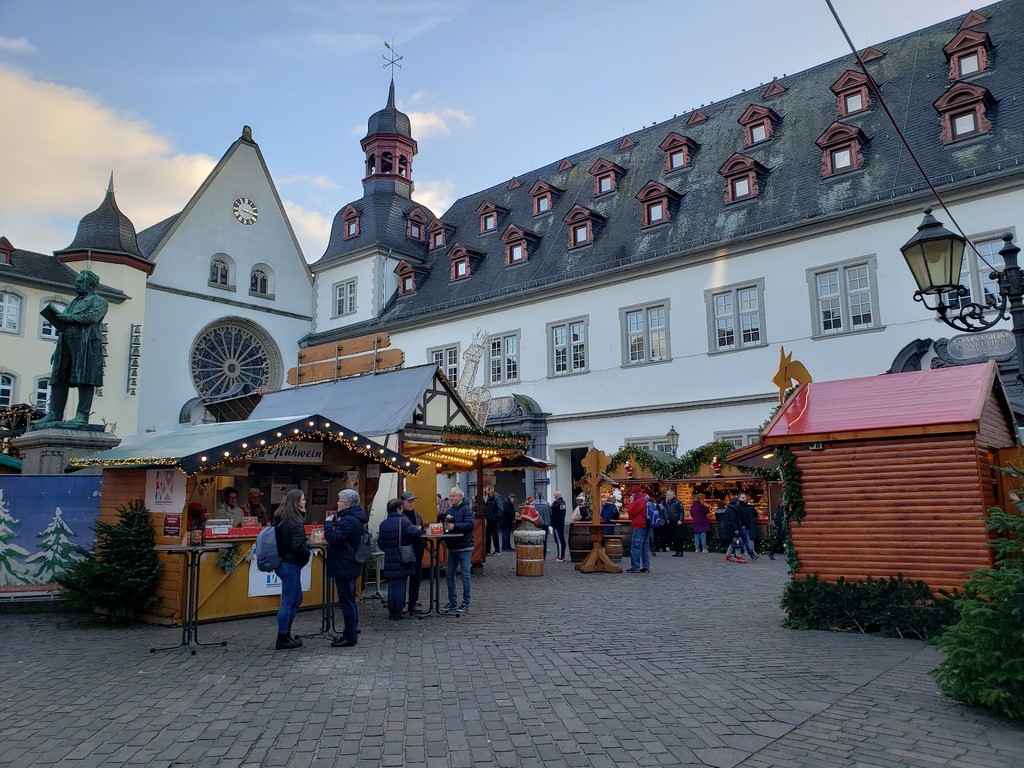
Jesuitenplatz (Source: Google Maps)
Jesuitenplatz is a beautiful square in Koblenz, named after the former Jesuit College that once stood nearby. Today, the square is a vibrant public space, featuring charming architecture and a lively atmosphere. The centerpiece of Jesuitenplatz is the stunning City Hall, which showcases a blend of architectural styles that tell the story of Koblenz's development over the years. This square serves as a gathering place for locals and tourists alike, often hosting events, markets, and cultural activities. The surrounding buildings, with their ornate facades and historical significance, create a picturesque backdrop for leisurely strolls and social gatherings. Jesuitenplatz is not only important for its architectural beauty but also for its role in the community, fostering connections and celebrating the city's rich heritage. Visitors can enjoy the vibrant energy of the square while appreciating the history that surrounds them.
Görresplatz
Head to Görresplatz, a lively square featuring the Historiensaule, a column illustrating the history of Koblenz.
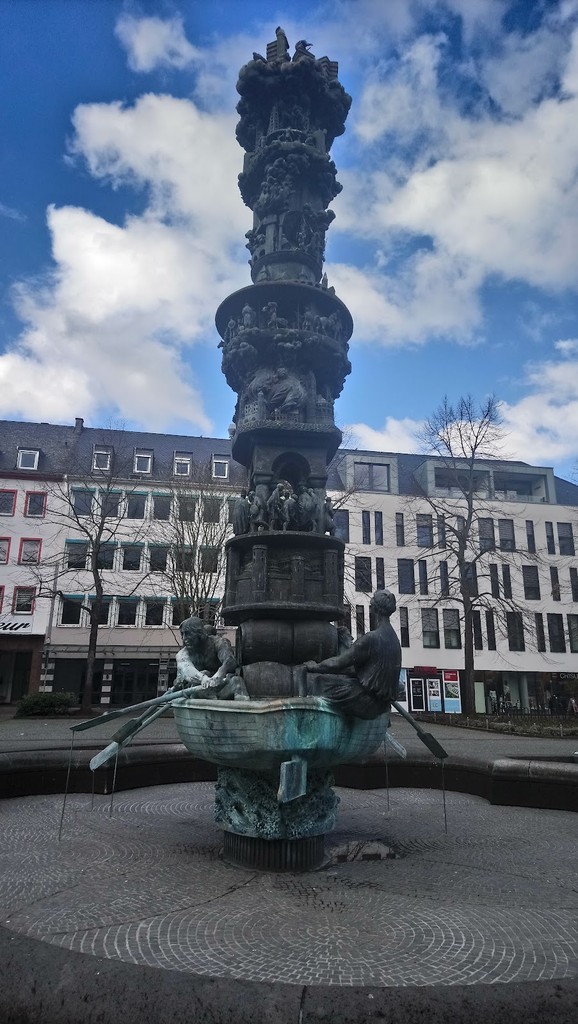
Görresplatz (Source: Google Maps)
Görresplatz is a lively square in Koblenz, distinguished by its iconic Historiensaule, a column that illustrates the rich history of the city. This square is named after the German writer and journalist Joseph Görres, who played a significant role in the cultural and political life of the region. The Historiensaule stands as a monument to the city's past, depicting various historical events and figures that have shaped Koblenz over the centuries. The square is a popular meeting point, surrounded by cafes and shops, where locals and visitors come together to enjoy the vibrant atmosphere. Görresplatz often hosts events, concerts, and markets, contributing to its lively character. The combination of historical significance and modern-day activity makes Görresplatz a key highlight of the city, providing a space where history and community intersect. Visitors can immerse themselves in the local culture while appreciating the artistic representation of Koblenz's history.
Electoral Palace (Kurfürstliches Schloss)
Conclude your tour at the Electoral Palace, a splendid neoclassical palace with beautiful gardens overlooking the Rhine.
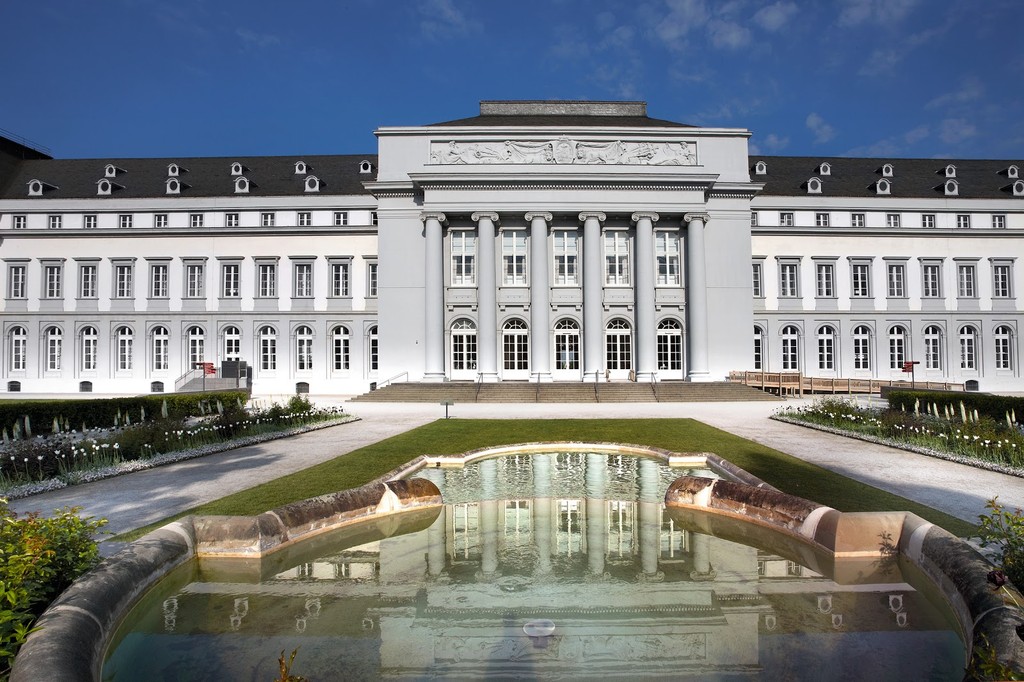
Electoral Palace (Kurfürstliches Schloss) (Source: Google Maps)
The Electoral Palace, or Kurfürstliches Schloss, is a magnificent neoclassical building that serves as one of Koblenz's most important landmarks. Constructed in the 18th century, the palace was originally built for the Electors of Trier and is notable for its elegant architecture and beautifully landscaped gardens that overlook the Rhine River. The palace features grand rooms adorned with exquisite decorations, reflecting the opulence of the era. Throughout its history, the Electoral Palace has served various purposes, including a residence for nobility and a venue for official events. Today, it houses the State Museum of Rhineland and Westphalia, offering visitors a glimpse into the region's art and history. The surrounding gardens are a popular spot for relaxation and leisure, providing stunning views of the river and the cityscape. The Electoral Palace is not only an architectural gem but also a cultural hub, making it a must-visit destination for those interested in the heritage of Koblenz.

Your travels, your rules.
Create your own Free Walking Tours.
Set your preferences, distances and anything you want to do or see.
Completely free, no payment required.